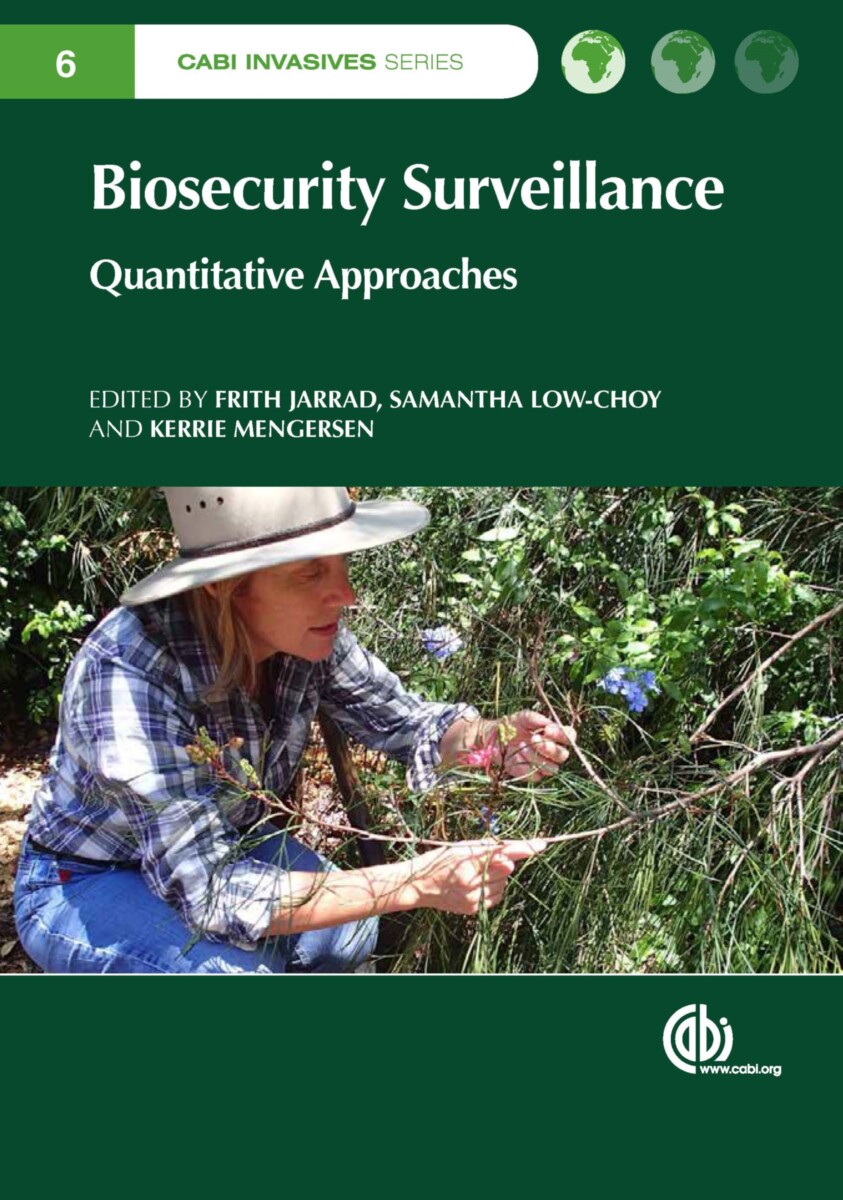- Publisher
CABI - Published
20th April 2015 - ISBN 9781780643595
- Language English
- Pages 386 pp.
- Size 8.5" x 11"
- Images figures & graphs
Biosecurity Surveillance provides the foundation and concepts behind surveillance design, with examples of methods and tools created to deal with surveillance challenges.
It includes supporting case studies and current directions in research and it covers evidence-based approaches to surveillance, statistics, detectability, single and multi-species detection, risk assessment, diagnostics, data-basing, modeling of invasion and spread, optimization, and future climate challenges.
1) Introduction to biosecurity surveillance
2) Biosecurity surveillance in agriculture and environment: a review
3) Getting the story straight: Laying the foundations for statistical evaluation of the performance of surveillance
4) Hierarachial models for evaluating surveillance strategies: diversity within a common modular structure
5) The relationship between biosecurity surveillance and risk assessment
6) Designing surveillance for emergency response
7) The role of surveillance in evaluating and comparing international quarantine systems
8) Estimating Detection Rates & Probabilities
9) Estimating non-compliance rate using imperfect and incomplete information
10) Surveillance for microbial soilborne pathogens and biocontrol organisms
11) Design of a surveillance system for non-indigenous species on Barrow Island: plants case study
12) Towards reliable mapping of biosecurity risk: incorporating uncertainty and decision-makers’ risk aversion
13) Detection survey design for decision making during biosecurity incursions
14) Inference and prediction with individual-based stochastic models of epidemics
15) Evidence of Absence for Invasive Species: Roles for Hierarchical Bayesian Approaches in Regulation
16) Surveillance as part of an SPS system: using bayesian networks to better understand plant and animal surveillance
17) Statistical emulators of simulation models to inform response to new biological invasions
18) Animal, vegetable, or …? A case study in using animal-health monitoring design tools to solve a plant-health surveillance problem
19) Agent-Based Bayesian Spread Model Applied to Red Imported Fire Ants in Brisbane
Frith Jarrad
Frith Jarrad teaches at Queensland University of Technology, Australia.
Samantha Low-Choy
Samantha Low-Choy teaches at Queensland University of Technology, Australia.
Kerrie Mengersen
Kerrie Mengersen teaches at Queensland University of Technology, Australia.


